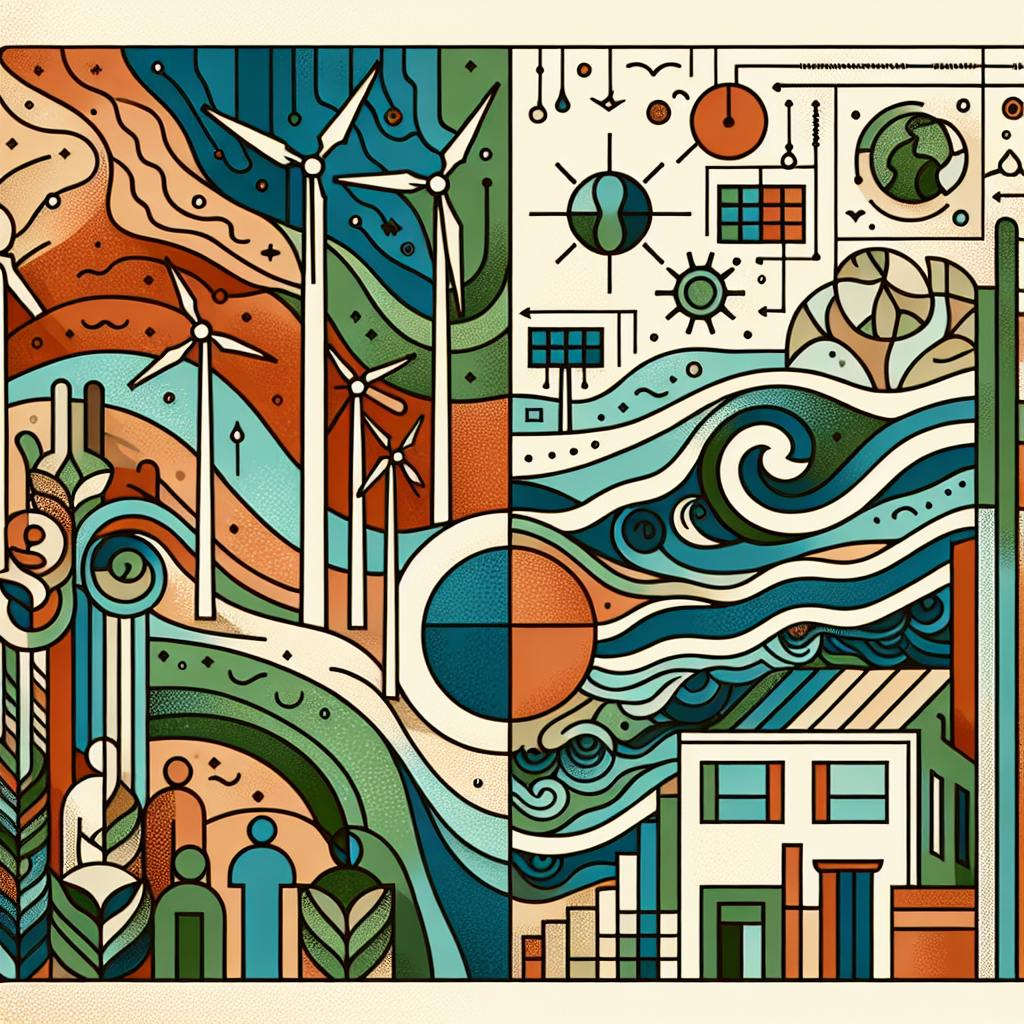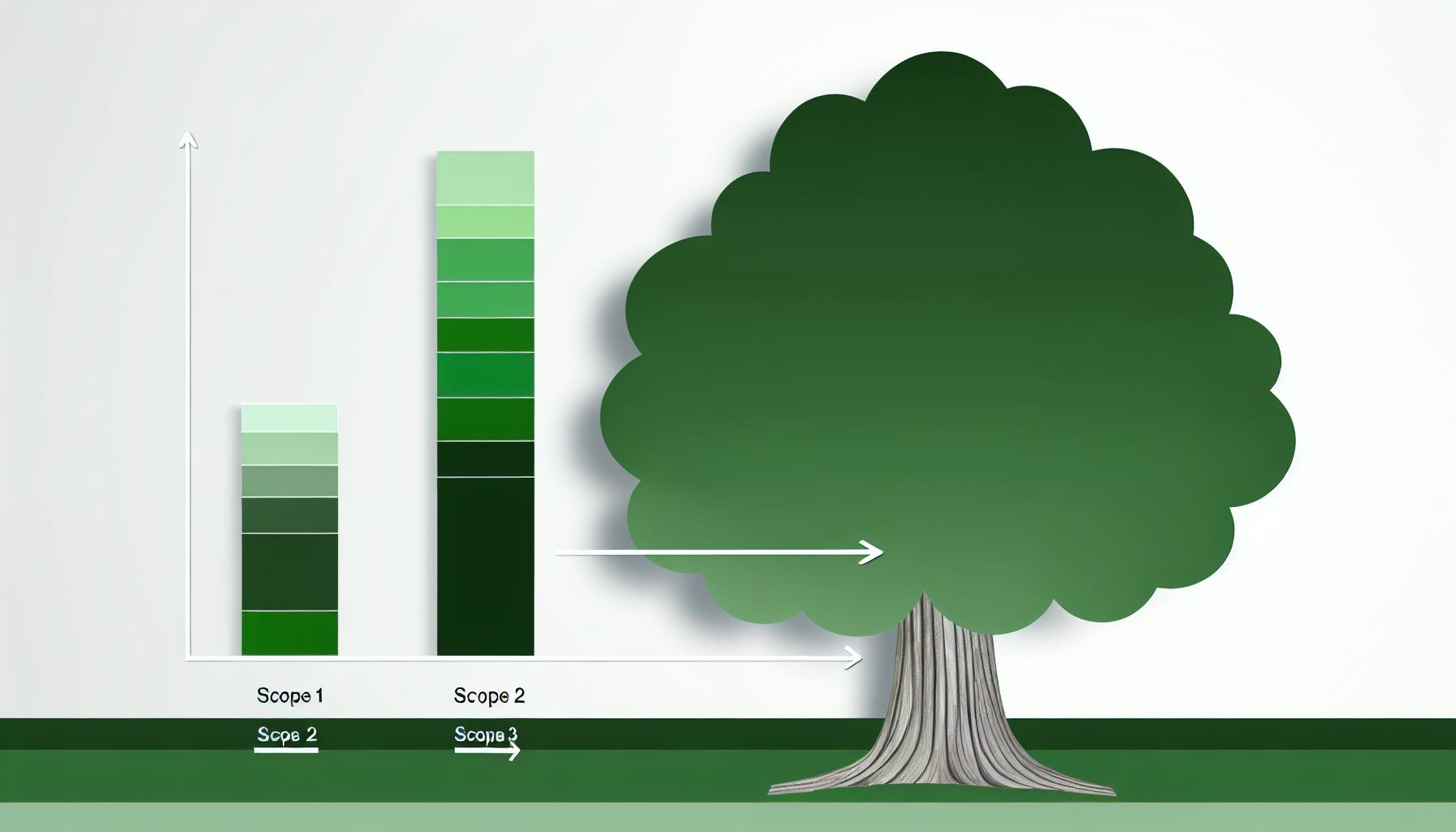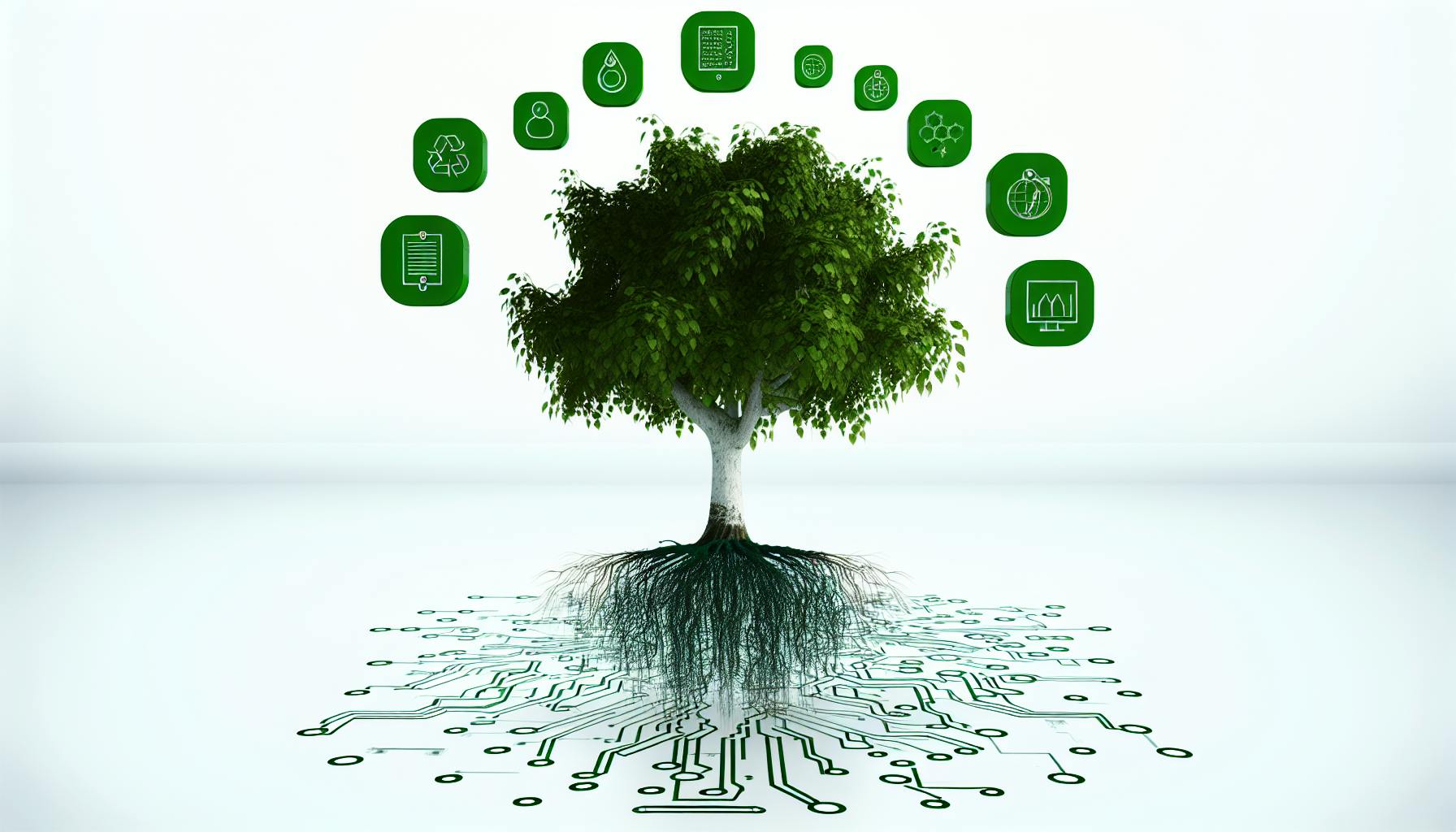Most organizations today agree that adopting environmentally sustainable business practices is crucial.
Leveraging SaaS solutions can empower companies to efficiently track, analyze, and report key sustainability metrics - enabling the accurate monitoring of environmental impact as they progress towards their green goals.
In this article, we will explore how and why businesses are going green, the critical role of SaaS platforms in simplifying sustainability reporting, and the wider implications of this green transformation on both companies and the planet.
Paving the Green Path with SaaS Solutions
Sustainability has become an imperative for businesses aiming to reduce their environmental impact. As eco-conscious operations gain priority, the need for efficient tracking and reporting of emissions data continues to rise. This is where SaaS solutions can pave the green path by enabling transparency and accountability.
Emergence of Eco-Friendly Brands in the Market
In recent years, there has been a marked increase in environmentally sustainable brands catering to conscious consumers. From electric vehicles to biodegradable packaging, green innovations are entering the mainstream. As climate change concerns dominate public discourse, adopting eco-friendly practices has become a major brand differentiator. For small businesses, sustainability reporting through SaaS tools can help broadcast ecological efforts to customers.
Evolving Environmental Sustainability Goals
Many enterprises are now establishing robust internal sustainability initiatives covering energy conservation, waste reduction and offsetting carbon emissions. To standardize ecological accounting, data tracking as per GHG protocol has gained global acceptance. For SMEs, manually monitoring such metrics can be resource intensive. This is where SaaS solutions add significant value by automating the monitoring and reporting processes.
The Role of SaaS in Streamlining Green Transformation
For SMEs with limited budgets, opting for an affordable SaaS-based carbon accounting platform can kickstart their sustainability journey. With customizable tracking as per emission scopes and automatic report generation, these solutions simplify compliance. Further, the ability to publish performance analytics provides the means to publicly showcase green commitments. As businesses increasingly switch to environmentally viable models, SaaS emerges as an efficient catalyst for digital transformation.
What businesses have gone green?
As highlighted in the section context, major technology companies like Google, Apple, and Microsoft have already made significant progress in reducing their energy consumption and working towards carbon neutral or negative emissions.
Here are some key examples of businesses going green:
- Retail - IKEA aims to be climate positive by 2030 through initiatives like installing solar panels on stores, electrifying delivery fleets, and sustainably sourcing materials. Walmart is working towards zero emissions by 2040 through renewable energy and fleet electrification.
- Food & Beverage - Starbucks plans to cut carbon emissions by 50% by 2030. McDonald's is working with beef suppliers to develop science-based targets for sustainable beef production.
- Manufacturing - GM and Ford are investing billions to ramp up electric vehicle production. Apple requires suppliers to run on 100% renewable energy.
The common thread is that these major companies have all set concrete emissions reductions targets and are investing heavily in renewable energy, fleet electrification, energy efficiency, sustainable materials, carbon removal efforts, and more. Their scale enables them to drive systemic change.
Additionally, countless small and medium enterprises are going green by doing things like installing solar panels, reducing business travel, eliminating single-use plastics, and buying carbon offsets. Eco-friendly business practices are becoming the expectation rather than the exception.
SaaS platforms like EcoHedge provide the tools for companies to accurately measure their carbon footprint, track progress over time, and engage stakeholders around their environmental sustainability initiatives. With robust data and insights, businesses can make informed decisions to reduce emissions while benefiting their bottom line. The path to net zero emissions is clearer than ever.
What does going green mean in business?
Going green refers to businesses adopting more environmentally sustainable practices in their operations. This includes reducing their carbon footprint, using renewable energy, improving energy efficiency, reducing waste, and making supply chains more sustainable.
Some examples of businesses going green include:
- Switching to renewable energy sources like solar or wind power
- Improving recycling programs and reducing paper use
- Making buildings more energy efficient with upgrades like LED lighting or improved insulation
- Reducing water use and installing low-flow faucets and toilets
- Buying carbon offsets to compensate for unavoidable emissions
- Choosing sustainable materials like bamboo or recycled paper for products
- Analyzing supply chains and transportation logistics to find efficiencies
Going green not only benefits the environment, but can save businesses money on energy and operating costs over time. It can also allow companies to market themselves as more sustainable brands. With environmental issues growing in public awareness, going green is becoming an expectation for modern businesses. The key is finding ways to incorporate sustainability that make sense financially and operationally. Leveraging software tools can assist with tracking key metrics around energy, waste, water, and emissions. Over time, data-driven insights allow businesses to set informed reduction targets and demonstrate continuous improvement to stakeholders.
Why are businesses now willing to become green?
Many businesses are realizing that sustainability is no longer just a cost of doing business, but an opportunity for innovation, new markets, and long-term profitability. Here are some of the key reasons behind this shift:
- Competitive advantage: Brands seen as sustainable often have an edge with ethically-minded consumers and talent. Eco-friendly operations can also lead to cost savings.
- Investor pressure: Shareholders increasingly expect companies to disclose and reduce emissions as part of good governance.
- New revenue streams: Low-carbon products and services are a growing global market, estimated at $26 trillion by 2030.
- Future-proofing: Tougher regulations seem inevitable. Proactive companies can avoid higher costs down the track.
- Reputational benefits: 72% of people say they would think better of a brand if its products or services were environmentally friendly.
The decision to "go green" is no longer seen as an unnecessary cost burden. Forward-thinking companies recognize sustainability as a vital pathway to continued prosperity in a carbon-constrained world. The environmental and financial benefits are becoming ever more compelling.
sbb-itb-0f1f828
What 5 companies are known for their green marketing?
Businesses today face increasing pressure from stakeholders to adopt environmentally sustainable practices. Many leading companies are responding through innovative green marketing initiatives that aim to reduce their environmental impact. Here are 5 major brands setting the pace:
Johnson & Johnson
For over a decade, Johnson & Johnson has implemented various recycling programs and pledged to remove harmful chemicals from their products. They created their "Earthwards" standard to help design products with less environmental impact. Their 2025 sustainability goals include using 100% renewable energy and achieving carbon neutrality.
Patagonia
The outdoor clothing brand Patagonia incorporates environmental sustainability into their business model. They use recycled and organic materials in their apparel and have robust chemical management processes. Patagonia also donates 1% of sales towards environmental nonprofits through their "Earth Tax" program.
Starbucks
With eco-friendly store design, reusable cup discounts, and investments in recycling infrastructure, Starbucks aims to reduce their environmental footprint. They are working towards sustainable coffee production through their C.A.F.E. Practices program. Starbucks plans to cut carbon emissions and water usage by 50% by 2030.
IKEA
IKEA integrates sustainability throughout their operations, from sustainable forestry for wood to reduced packaging waste. Their Democratic Design principles include using recycled materials and designing products for energy efficiency. IKEA aims to use only renewable and recycled materials by 2030.
Nike
Through their Move to Zero initiative, Nike is working to achieve zero carbon emissions and zero waste. They are optimizing production processes, expanding their sustainable material portfolio, and pioneering circular business models to maximize product lifecycles. Nike aims to source 100% renewable energy by 2025.
SaaS: A Catalyst for Sustainability Reporting
Comprehensive Data Management for Environmental Impact
SaaS platforms provide businesses going green with advanced tools to accurately measure their environmental impact. Features like automated data collection from various sources, customisable data models, and centralised data management enable comprehensive analysis of sustainability KPIs. This gives companies real-time visibility into emissions across operations, supporting evidence-based decisions on decarbonisation efforts.
By seamlessly integrating sustainability data into mainstream business intelligence systems, SaaS also facilitates regular monitoring and benchmarking against reduction targets. With custom tags and metadata, nuanced insights can be gleaned to drive operational excellence. Compliance is also simplified by leveraging SaaS audit trail features for internal and external reporting obligations.
In summary, SaaS equips businesses on their sustainability journey with robust systems to manage environmental data at scale. This is instrumental in targeting and achieving net-zero emissions.
Real-Time Sustainability Analytics and Insights
The analytical capabilities of SaaS help uncover granular and actionable sustainability insights for businesses going green. Embedded AI/ML algorithms enable predictive modelling and scenario analysis so that managers can stress test reduction strategies. Interactive self-service dashboards provide real-time visualisation of KPIs from granular levels up to consolidated reporting. This gives all stakeholders a consistent, up-to-date view to track performance gains against sustainability goals.
By leveraging dynamic benchmarks, companies can also compare their metrics against industry standards to calibrate climate efforts. Natural language query and voice analytics further simplify accessing complex sustainability data analytics for business users. These self-serve features help managers conduct rapid what-if analysis to simulate and optimise their carbon strategies. In turn, resources are allocated effectively to maximise emissions reduction.
Thus SaaS analytics are invaluable for businesses navigating their decarbonisation pathways, a core capability lacking in generic software tools.
Enhancing Public Transparency in Green Initiatives
To credibly demonstrate their sustainability progress, businesses going green must engage stakeholders through transparent public reporting. SaaS platforms streamline mandatory disclosures like CDP and regulatory filings which quantify corporate environmental impact. More importantly, they enable open publication of voluntary sustainability reports to proactively influence stakeholder opinions.
With multi-channel APIs, apps and embeddable web apps, SaaS also helps convey sustainability performance via digital channels to reach wider audiences. This facilitates public dialogue and collective climate action across value chains. Research shows investors actively seek out sustainability disclosures in allocation decisions while consumers prefer brands that are transparent about their eco-friendly practices.
Therefore, the publishing power of SaaS solutions helps businesses showcase accountability in pursuing net zero, enhancing branding and public trust.
Collaboration and Sharing of Environmental Successes
As stakeholders become more discerning of corporate greenwashing tactics, credibly demonstrating sustainability commitments is key for businesses going green. SaaS platforms enable collaborative initiatives where companies can publicly share environmental successes with value chain partners and industry peers. These collective actions endorsed by established standards bodies lead to positive brand halo effects.
For example, the EcoHedge Community App facilitates member collaboration on eco-innovation projects where participants openly publish measurable outcomes. By cultivating healthy competition grounded in science-based target setting, all stakeholders progress their climate responsibilities together through peer motivation and public accountability.
Such collaborative apps demonstrate that eco-business communities can thrive on shared successes while accelerating sector-wide sustainability through transparent knowledge exchange.
Adopting SaaS for Environmental Sustainability
Defining Green Goals with SaaS Solutions
SaaS solutions provide businesses with the tools to set clear emissions reduction targets and sustainability objectives. By leveraging carbon accounting and reporting features, companies can establish science-based emission goals aligned with net-zero trajectories. Dashboards give visibility into performance against targets over time. This enables informed decisions when optimizing operations for improved environmental impact. Best practices include setting both long-term and incremental goals, ensuring they are specific and measurable.
Navigating SaaS Selection for Sustainability Reporting
When evaluating SaaS options for sustainability reporting, key considerations include compliance needs, integration capabilities, and ease-of-use. Businesses should assess reporting frameworks like GRI, SASB, TCFD they need to comply with. Understanding industry benchmarks is also important to tailor solutions to sector-specific requirements. Prioritizing platforms that seamlessly integrate with existing tech stacks saves manual effort. An intuitive user interface enables staff at various skill levels to leverage the software. Considering all these factors allows businesses to select tailored SaaS platforms to efficiently meet sustainability reporting needs.
Seamless Integration with Business Ecosystems
Integrating sustainability SaaS solutions into broader IT ecosystems maximizes value. Prioritizing interoperability allows real-time transfer of emissions data across operations. Open API functionality also enables connections with other platforms. This consolidates information flows, providing a centralized sustainability data hub. Following best practices around access controls and data security is critical during integrations. Additionally, providing staff training and support materials on system capabilities ensures user adoption. With thoughtful integration, SaaS sustainability tools can streamline data-driven environmental decision making.
Training and Capacity Building
Sufficient training and internal capability building is requisite for successfully leveraging SaaS sustainability solutions. Providing both system admin and end-user onboarding ensures staff across roles understand platform capabilities and outputs. Ongoing lunch-and-learn seminars about new features sustain engagement. Designating power-users as go-to resources also facilitates peer learning. Furthermore, job-specific training highlighted how daily workflows impact sustainability KPIs connects strategy to actions. With the right knowledge and skills, staff organization-wide can utilize SaaS tools to make processes more environmentally friendly.
Case Studies: SaaS-Driven Environmental Change
Businesses going green can leverage SaaS platforms to accurately measure, report on, and reduce their environmental impact. Here are some real-world examples of companies using SaaS to drive positive change.
Impact Story: SaaS Empowering Renewable Energy Initiatives
EcoAccounting is a carbon accounting SaaS helping construction firms track the environmental benefits of building renewable energy projects like solar farms and wind turbines. By quantifying greenhouse gas savings compared to fossil fuel plants, EcoAccounting enabled clients to promote sustainability initiatives to investors and win more clean energy contracts. Within one year, customers reporting through EcoAccounting built over 500MW of zero-emission generation capacity.
Green Transformation: Waste Reduction Success Through SaaS Analytics
A grocery store chain utilized EcoInsight's waste analytics SaaS to identify inefficiencies in inventory management and food spoilage. By optimizing ordering and storage based on data insights, the retailer reduced food waste by 43% within six months. This significantly lowered disposal costs while boosting profit margins. Customers also responded positively to sustainability messaging based on certified waste diversion rates.
SaaS and Carbon Footprint: A Journey to Net-Zero Emissions
EcoHedge's carbon accounting SaaS helped an IT consulting firm measure its corporate emissions for the first time. Software analytics revealed business travel accounted for nearly 75% of the company's carbon footprint. EcoHedge modeled the impact of potential reduction strategies, demonstrating that optimizing travel booking policies could make the consultancy net-zero within 3 years. The data-backed business case catalyzed investment in emissions mitigation programs.
Ecosystem Restoration: Tracking Progress with SaaS Tools
By integrating aerial mapping data into its environmental intelligence platform, EcoSpatial empowers ecological nonprofits to precisely monitor restoration initiatives. Users can visualize tree canopy growth over time within reforestation project areas. Quantifying progress builds trust with individual and corporate donors by validating conservation efforts. More reliable tracking also helps NGOs adapt strategies to boost restoration rates.
Conclusion: The Strategic Advantage of SaaS in the Green Revolution
Recap: The Imperative of Sustainability Reporting for Modern Businesses
Sustainability reporting has become an imperative for modern businesses looking to reduce their environmental impact. With stakeholders increasingly demanding transparency around carbon emissions and environmental practices, the ability to accurately measure and communicate sustainability metrics is crucial. This is where SaaS solutions shine. By providing automated tracking of emissions data and simplified reporting features, SaaS platforms like EcoHedge empower businesses to efficiently meet sustainability reporting needs. Recapping the necessity of this process is key as we look to the future intersection of SaaS and green business trends.
Future Outlook: The Intersection of SaaS and Green Business Practices
As the business world continues rapidly evolving to prioritize environmental sustainability, the role of SaaS solutions in enabling this transition will only grow. We can expect to see sustainability reporting become standardized across industries, with SaaS providers leading the way in providing accurate, automated emissions tracking to inform business decisions. The future is bright for both green-focused SaaS developers and sustainability-driven companies leveraging these platforms for strategic advantage.
The Ripple Effect: Wider Implications for Stakeholders and the Environment
Ultimately, the intersection of SaaS and sustainability priorities has ripple effects across stakeholders and the planet. By equipping companies with the tools to measure, report on, and reduce environmental impacts, SaaS solutions empower businesses to make substantive emissions reductions. In turn, this benefits stakeholders seeking climate accountability and shapes societal norms to value sustainability. As businesses going green becomes standard, the strategic advantages of SaaS sustainability reporting will drive positive change at scale.



